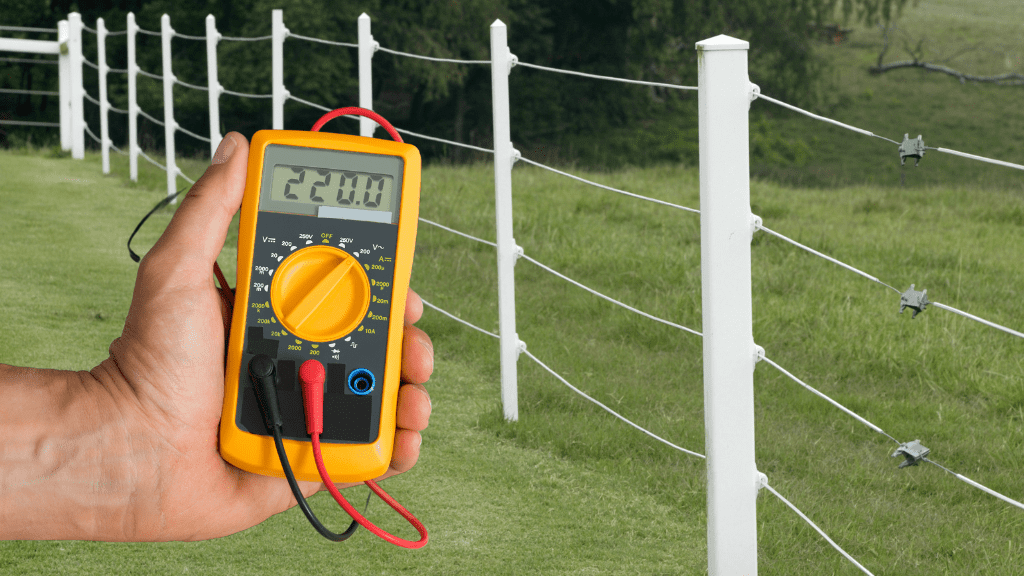how to test electric fence
In today's modern world, electric fences have become an essential tool for maintaining security and safety in a variety of settings. Whether it's to keep livestock within a designated area or safeguarding our homes from intruders, electric fences have proven to be effective deterrents. However, it is crucial to periodically test these fences to ensure their functionality and reliability. In this post, we will explore the steps involved in testing an electric fence using a multimeter.
Step 1: Gather the necessary equipment

Before starting the testing process, it is important to gather the required equipment. In this case, you will need a multimeter, which is a versatile and essential tool for measuring electrical parameters. Additionally, ensure that you have a sturdy, non-conductive handle to hold the multimeter probes, as safety should always be a priority when dealing with electricity.
Step 2: Prepare for testing

After gathering the necessary equipment, it's time to prepare for testing. Before touching any part of the electric fence, ensure that the power is turned off. This is crucial to avoid any potential risks of electric shock. Once the power is off, use your non-conductive handle to hold the multimeter probes and get ready to measure the voltage.
Step 3: Test the energizer output voltage
Now that everything is in place, it's time to test the energizer output voltage. The energizer, also known as the power source of the electric fence, is responsible for delivering the electrical charge to the fence wires. To perform this test, place one multimeter probe on the positive terminal of the energizer, and the other on the negative terminal. Take note of the voltage reading displayed on the multimeter.
Step 4: Check voltage along the fence
Once you have tested the energizer output voltage, it's essential to check the voltage along different points of the fence. This step is crucial as it helps identify any potential issues with the fence wiring or grounding. To perform this test, place one probe of the multimeter on the fence wire or tape, and the other probe on the ground, ensuring good contact. Move along the fence line and take note of the voltage readings at various points.
Step 5: Inspect fence hardware and connections
In addition to measuring the voltage, it's important to inspect the fence hardware and connections during the testing process. Check for any loose or corroded connections, damaged wires, or faulty insulators. These issues can impact the overall performance of the electric fence and compromise its effectiveness in providing security. Make sure to address any identified problems before completing the testing process.
Step 6: Test fence grounding
A well-grounded electric fence is essential for its proper functioning. To test the grounding, place one probe of the multimeter on the ground rod or grounding system, and the other probe on the ground wire that connects to the fence. This step helps determine if the grounding system is properly working and if any improvements or repairs are needed to ensure optimal performance.
Step 7: Document and maintain records
Lastly, it is essential to document the testing process and maintain detailed records. Keeping a record of the voltage readings, any identified issues, and the steps taken to address them can help establish a maintenance schedule and ensure the ongoing effectiveness of the electric fence. Regular testing and maintenance are key to preventing potential security breaches and keeping the fence in optimal condition.
Remember, testing an electric fence with a multimeter should be done by individuals who are knowledgeable about electrical safety. If you are uncertain or inexperienced, it is always advisable to seek professional assistance. Safety should always be the top priority when dealing with electricity.
In conclusion, testing an electric fence with a multimeter is a crucial part of fence maintenance. By following the steps outlined above and ensuring regular testing, you can guarantee the continued security and safety provided by the electric fence. Remember to always prioritize safety, document your findings, and address any identified issues promptly. With proper care and maintenance, your electric fence will remain an effective deterrent for years to come.

